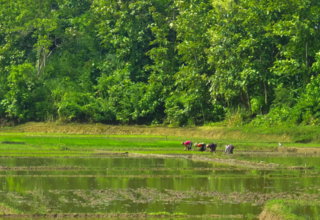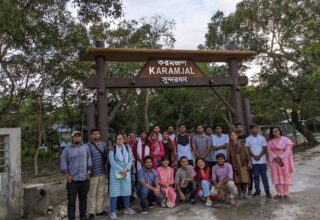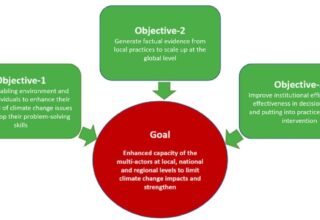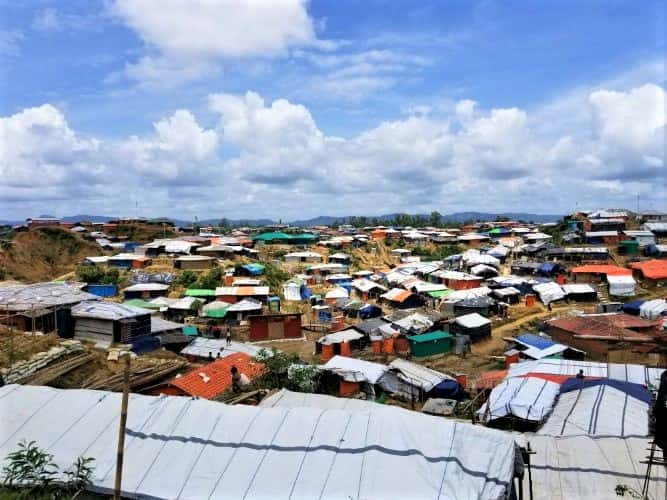
New paradigms
Currently, there are upwards of one million Rohingya refugees living in Cox’s Bazar. For all the talk of moving the Rohingya elsewhere, such as Bashan Char Island, or repatriating them to Myanmar, it is almost certain that they will remain where they are for an indefinite period of time.
History has shown that the average age of a refugee camp is 12 years. Like most other refugee camp situations, this one will likely last for at least another decade.
Many NGOs and aid agencies that are working on Rohingya issues realize that this is not temporary, and are starting to take a longer-term view of the camps. The shift from emergency relief to development has begun, underscoring the fact that the refugee crisis has huge long-term implications for how development operates beyond state citizenship.
The Rohingya crisis is a useful case study to understand how refugees are slowly being brought into the traditional development framework. The scope of facilities and programs set up by the International Organization for Migration (IOM), UN Refugee Agency (UNHCR), and the hundreds of NGOs working in the camps over the past year is remarkable.
They have built camps from the ground up and organized them into zones with basic roads and latrines, tubewells, health facilities, and community centers. However, the separate institutions that are in place to deal with longer-term development and emergency relief are not aligned in their goals. This affects the extent of aid given, the type of facilities that are built, and of course the economic and political rights and social support that the Rohingya have.
A strong indication of the shift toward development in the Rohingya camps is the recent investment from the World Bank and Asian Development Bank (ADB), of $480 million and $100 million respectively. Traditionally, these two institutions have invested in long-term development projects and supported governments in capacity building. In the past few years, they have created a relief fund for emergency situations exactly like the Rohingya crisis.
One of the investments from the World Bank and ADB is in renewable energy in the Rohingya camps. The investment in energy access shows a gradual shift toward longer-term, or at least medium-term, planning in the camps. Compared to international aid funding in every other sector—water and sanitation, health, shelters, etc.—energy had no allocated funding at the beginning of the Rohingya influx.
This is largely because energy is not seen as essential to emergency relief, which is arguably an outdated view from the aid industry, as energy access is linked to more positive health effects and gender safety and equality. Now with the World Bank and ADB’s investment plan, there is a portion allocated to set up some solar mini-grids in 2019, as well as constructing more solar lamps and distributing solar lanterns.
Historically, there has not been a systematic approach to energy supply in conflict settings because they are thought to be shorter term. Most of the energy is supplied ad hoc by individual NGOs or international aid agencies, usually through diesel generators. The move toward renewable energy shows increasing interest in long-term development because it is inherently sustainable and simple to use. A solar mini-grid offers a cleaner and more consistent alternative to diesel generators, and can potentially be used to anchor local mini-grids if the refugee camps are present in the longer term.
Out of all the Rohingya camps, it is striking that the only one that is connected to the national electricity grid, and thus situated for longer term, is a camp in Teknaf, where some Rohingya have been around for many years and have essentially assimilated into the surrounding community. Perhaps the thought here is that there is “value added” if the Rohingya contribute economically, so it makes sense to invest in electricity lines. However, this situation is exceedingly rare, as the vast majority of Rohingya cannot move freely outside the camps and thus are unable to be economically independent.
Historically, there has not been a systematic approach to energy supply in conflict settings because they are thought to be shorter term.
While the notion of development is important for improving livelihoods, the development itself must be done differently for the stateless. Traditional forms of economic development do not work for stateless people who have no means to gain employment. Though there are some cash-for-work programs and recreation facilities set up by aid agencies, the vast majority of Rohingya have nothing to do during the day; their routines are often set around food and aid distribution schedules. They are recovering from unimaginable trauma. The camps will only continue to grow: Rohingya are still crossing the border, though at much lower rates, and there are projected to be 50,000 babies born this year. No amount of aid distribution or traditional notions of development will fix these facts of life for the Rohingya.
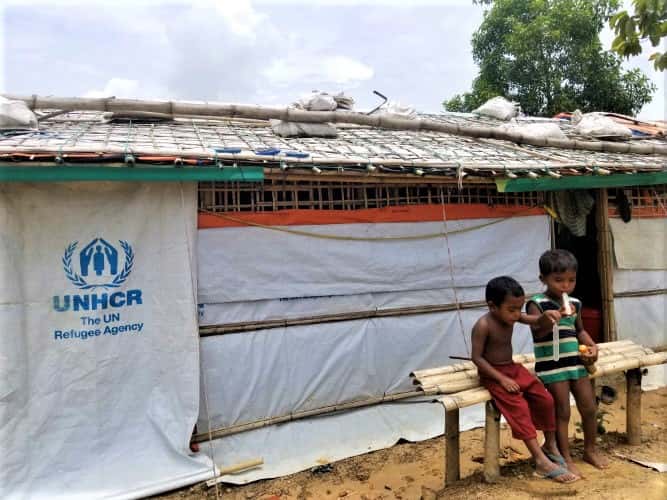
Part of the difficulty in streamlining development efforts is the institutional power structure of the camps. Since the exodus began in August 2017, the Bangladesh government has not officially labeled the Rohingya as “refugees.” Without this label, UNHCR could not head the emergency relief operations in the camps, as they normally would when refugees are involved. Thus, IOM took over camp operations. Within a few months, UNHCR was allowed to work in the camps and it started co-leading operations with IOM. The two humanitarian stakeholders now oversee relief operations in about 10 sectors and work alongside the government’s response to the crisis, which includes different government agencies and the Bangladesh army. This web of agencies does not have mutually exclusive goals, but since they do not normally collaborate in this way it has been challenging to settle on long-term goals.
Another challenge is that there is no direct guiding principle globally for how to integrate stateless people, let alone how to develop communities with them in mind. One of the main guiding principles for long-term sustainability planning is the UN Sustainable Development Goals, a set of 17 goals that aim to end poverty with strategies that build economic growth and address a range of social needs including education, health, and environmental protection. None of the goals explicitly address development for stateless persons.
International NGOs and the UN could adopt a more explicitly rights-based approach to development, especially as more refugee crises and mass migrations are projected to occur in the future. This approach would combine different existing concepts of international development, such as capacity building, human rights, participation, and sustainability. The goal would be to empower the group that cannot exercise full rights and to strengthen the capacity of institutions and governments obligated to fill these rights. However, the main criticism against the rights-based approach is that it merely incorporates the language of human rights with development, but does not change the programs being implemented. In order for change to take place, governments must be willing to accept refugees and migrants, and hold other countries accountable for the processes that lead to refugees in the first place. Many governments that receive refugees, whether willingly or not, are not capable of developing long-term communities for the refugees in their own country.
There are currently about six million people in protracted displacement situations globally, and even more migrants, who are not officially given economic and political rights by the state. Crises like this will only continue to happen at varying scales, whether through ethnic cleansing, environmental disaster, economic crisis, or something else. The UN, development agencies, NGOs, and some governments are only just beginning to rethink how we prioritize refugees and migrants and integrate them into existing development frameworks. There will be many lessons to learn from the Rohingya crisis for years to come. A likely one will be how to conceptualize development for those that have been systematically “othered” and persecuted.
Originally this article was published on August 17, 2018 at Climate-Tribune (Dhaka Tribune). The author Samira Siddique is a visiting researcher at ICCCAD and PhD student in the Energy and Resources Group at the University of California, Berkeley.
Email: samirasiddique@berkeley.edu




